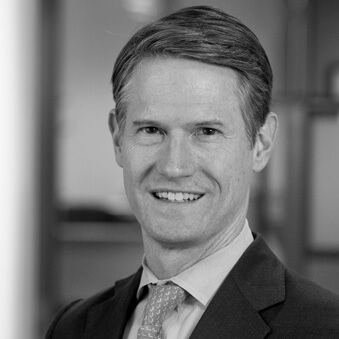January 31, 2018

Fortress Healthcare Meanders Toward Value
There are more “suits” in downtown San Francisco each January for JP Morgan’s annual healthcare conference than the rest of the year combined. Heavy rain drenched San Francisco on January 8th, the conference’s opening day. Many reported seeing Noah building an ark in Union Square.
The “big ship” metaphor carried into the conference. Healthcare giants across all sectors are scaling up to withstand transformational pressures while driving toward better outcomes, lower costs and more consumerism.
For the 10,000 registered attendees and the 20,000 plus who came to network, shelter was hard to find. Nearby restaurants charged $200 an hour just to reserve a table. Movers and shakers occupied every coffee shop and hallway.
Men dominated the conference. A report by STAT generated significant buzz. It noted that more CEOs named Michael (22) presented than women CEOs (20). Johns, Marks, Daves, Bobs and Steves also were well represented. Overall 94% of the company speakers were men, a sobering imbalance.
Over half the presenting companies represented the bio-pharma sector. Large organizations and private equity firms noticeably outnumbered entrepreneurs and venture capitalists. Attendees seemed weary of healthcare policy reforms. Instead, they focused on business fundamentals: expanding multiples; increasing market share; revenue growth and expense control.
Occasional rainbows glittered within the corporate fog. Companies big and small highlighted market pressures and the imperative to steer business models toward value. For example, Adventist Health System stressed its determination to manage all its customers’ healthcare needs. One Medical noted the explosive growth of its consumer-oriented platform to enterprise clients, including Google and Uber.
Eight years after converting to for-profit status, Steward Heath Care made its first appearance on the JP Morgan stage. CEO Ralph de la Torre highlighted Steward’s high-tech, asset light, community-centric operating platform. In 2017, Steward more than tripled its revenues as it expanded into 9 new states.
Like the rising waters outside the St. Francis Hotel, healthcare valuations continued to rise across most verticals heading into 2018. Private equity firms and strategic investors are awash in capital they want—and need—to deploy. Large funds are floating down market in search of smaller partners with less developed infrastructure. Deals get done at multiples many times larger than historic norms.
In his history of the Peloponnesian War, Thucydides wrote of the combatants, “The strong do what they can and the weak suffer what they must.” In 2018, large organizations will sail their fleets confidently into battle while small organizations will seek alliances and scale to fortify themselves against payers and market forces.
On the frontlines, providers are positioning themselves to win customers by delivering higher quality care and better service more efficiently. At the rear, the battle is for clinical precision through right-care, right-setting delivery with more emphasis on integration and cost cutting than revenue maximization.
 Sector Observations
Sector Observations
With a remarkable 18 percent share of the U.S. economy, healthcare includes numerous industry sectors that collaborate and compete with one another. The JP Morgan annual conference is the one place where all sectors gather together. Observing and engaging professionals from these different sectors provides a current sense of the industry and insights into the coming year. Here are several observations:
Rollups and Consolidation Roll On
- 2017 saw historic merger activity (in size and volume) as health systems sought to expand market share while gaining the strategic flexibility to deliver more value to consumers.
- 2018 promises to be even busier with reduced regulations, higher valuations, and the new tax bill driving velocity.
- Smaller rollups of physician practices and specialty services like radiology will be plentiful.
- Physician groups will continue to attract private equity. Less developed prospects will be increasingly targeted.
Asset Light Strategies Prevail
- Backed by private equity and real estate investment trusts, some providers are selling assets and/or reducing facility ownership.
- Their focus is on finding ways to deliver more care along the continuum through less costly non-hospital access points.
- Optum’s 2017 acquisition of Surgical Care Affiliates provides evidence of this trend.
Retail is Going Healthcare
- In 2017, healthcare surpassed retail as the largest employer in the American economy.[1]
- Dental offices, primary care clinics and specialty services increasingly dominate local strip malls.
- Healthcare consumers want convenient locations and hours of operation.
- Investors, with less need for healthcare domain expertise, are increasingly coming from consumer and retail sectors.
Tightening Labor Markets
- Staffing companies are experiencing strong growth.
- Wages are rising.
- Healthcare companies face recruiting challenges and rising labor costs.
Alexa Does the Books
- To optimize back office billing and operations, technology companies are deploying artificial intelligence and machine learning tools.
- These advances promise to take costs out of the business and will likely replace some full-time employees over time.
Medicare Advantage Marches Forward
- Medicare Advantage plans are projected to cover nearly 21 million people in 2018. In 2013 that number was 14.4 million.[2]
- As the number of programs grows, plan providers compete for customers on quality.
- To attract new enrollees, plans will assume more risk and manage costs more efficiently through digital health services and virtual healthcare technologies.
- Humana’s acquisition of Kindred’s home health, hospice and community care operations signals strong market interest in the over 65 population.
Skilled Nursing Under Pressure
- SNF occupancy rates continue to decline, well below other PAC segments.
- Consolidation and strategic financing will be necessary to secure capital access to renovate and repurpose deteriorating facilities.
- Kindred’s SNF exit was driven largely by its lease expiration – a wake-up call to the industry.
- Many PAC providers with active Model II and Model III bundled payment programs are losing sizable amounts of money.
- New CMS reimbursement for skilled nursing facilities (RCS 1) will further escalate tensions for acute and post-acute providers.
- As Advanced Alternative Payment Models begin year 2, strategy may shift toward medical home models.
MedTech Rising
- Services multiples topped out 1-2 years ago while MedTech multiples continue to rise.
- Tax reform should be a tailwind for aggressive deal activity in the med-tech sector.
Acknowledging Social Determinants
- Health systems and other providers targeting improvement in social determinants of health for managing population risk and reducing total healthcare costs.
- Some providers, particularly those offering enhanced primary care services, are experiencing meaningful decreases in costly ER visits and hospitalizations.
Increasing Activity in Pharma Services, Physician Groups, Hospice, Autism and Opioid Treatment
- Financial sponsors and strategic investors are showing significant interest in each of these verticals.
- Substantial capital allocations and robust M&A expected for each in the year ahead.
Implications for 2018
Given its enormity, frenetic activity and January timing, JP Morgan’s annual healthcare conference signals trends for the year ahead. Sifting through the residue of this year’s conference provides the following insights for the healthcare marketplace in 2018:
- Consolidation, with an emphasis on vertical integration, will continue.
- After relentless media attention, there will be less focus on healthcare reform. Being out of the public spotlight will give CMS administrators and legislators more freedom to make positive regulatory adjustments.
- Demographics and consumer-friendly program design will push more baby boomers into Medicare Advantage. This will fuel the growth of expansive primary care platforms.
- The improvement of consumer-friendly transparency tools will increase pressure on providers to deliver better, lower-cost and more convenient care services. Companies that successfully provide these services will grow.
- Watch Massachusetts: MassHealth is expanding dramatically into provider-sponsored managed Medicaid and seeking a federal waiver to design drug formularies. The outcomes of these efforts could shape Medicaid reform nationwide.
- Given lower corporate tax rates, Steward Health Care’s success and increasing municipal pressure for PILOT (payment in lieu of taxes) revenues, select not-for-profit health systems may consider conversion to taxable organizations.
Bigger, Better or Both?
American healthcare will continue to navigate between strong countervailing pressures in 2018. While health companies, particularly in the pharma sector, achieve scale and push for greater revenues, individual, corporate and governmental payers want to pay less for healthcare services. Tax and regulatory reform will complicate strategic repositioning.
December marked the announcement of several earth-shattering mega-mergers and acquisitions (e.g. CVS’s acquisition of Aetna) across multiple health sectors. These represented major market signals from established health companies that their existing business models aren’t well positioned to compete in the post-reform marketplace.
Many industry observers assert these mega-transactions continue the healthcare industry’s long-held practice of getting bigger to increase negotiating leverage, not value. At the same time, record levels of “smart” private equity and venture investment is funding innovative healthcare business models that deliver better outcomes, lower costs and enhanced customer experience.
The battle lines are becoming clearer. Acquiring members is essential for companies to gain an advantage in the increasingly competitive primary care marketplace. As this occurs, consumers are taking more responsibility for their healthcare purchasing decisions. When unleashed, consumers are value-seeking machines.
When consumers require healthcare services, providers of all kinds must deliver increased clinical precision in market environments with greater outcome, pricing and customer experience transparency. Companies achieve competitive advantage by delivering the right care at the right time in the right place at the right price.
Healthcare has not rid itself of activity-based transactions fueled by fragmentation and distorted incentives. A lingering question hung in the air throughout the conference: can bigger healthcare companies also be better healthcare companies?
The long arc of history points toward greater healthcare value. Without improvement, big health companies cannot withstand turbulence forever. After all, as Thucydides chronicled first-hand, mighty Athens ultimately fell to the more nimble and focused Spartans.
[1] https://www.theatlantic.com/business/archive/2018/01/health-care-america-jobs/550079/
[2] https://www.kff.org/medicare/fact-sheet/medicare-advantage/
CO-AUTHOR
Todd Rudsenske
 Todd Rudsenske co-leads Cain Brothers’ Behavioral Health Advisory practice and leads the Firm’s Financial Sponsors and Corporate Private Placement Advisory practices. Mr. Rudsenske joined Cain Brothers in 2003 and has over 20 years’ experience advising private and public companies in a variety of merger and acquisition, capital raising, and strategic advisory transactions.
Todd Rudsenske co-leads Cain Brothers’ Behavioral Health Advisory practice and leads the Firm’s Financial Sponsors and Corporate Private Placement Advisory practices. Mr. Rudsenske joined Cain Brothers in 2003 and has over 20 years’ experience advising private and public companies in a variety of merger and acquisition, capital raising, and strategic advisory transactions.
Cain Brothers is a pre-eminent investment bank focused exclusively on healthcare. Our deep knowledge of the industry enables us to provide unique perspectives to our clients and is matched with the knowhow needed to efficiently execute the most complex transactions of all sizes. www.cainbrothers.com
Disclaimer:
The information contained in this report was obtained from various sources that we believe to be reliable, but we do not guarantee its accuracy or completeness. Additional information is available upon request. The information and opinions contained in this report speak only as of the date of this report and are subject to change without notice. This report has been prepared and circulated for general information only and presents the authors’ views of general market and economic conditions and specific industries and/or sectors. This report is not intended to and does not provide a recommendation with respect to any security. Any discussion of particular topics is not meant to be comprehensive and may be subject to change. This report does not take into account the financial position or particular needs or investment objectives of any individual or entity. The investment strategies, if any, discussed in this report may not be suitable for all investors. This report does not constitute an offer, or a solicitation of an offer to buy or sell any securities or other financial instruments, including any securities mentioned in this report. Nothing in this report constitutes or should be construed to be accounting, tax, investment or legal advice. Neither this report, nor any portions thereof, may be reproduced or redistributed by any person for any purpose without the written consent of Cain Brothers.
Cain Brothers is a member of SIPC. © 2016 Cain Brothers and Company, LLC







